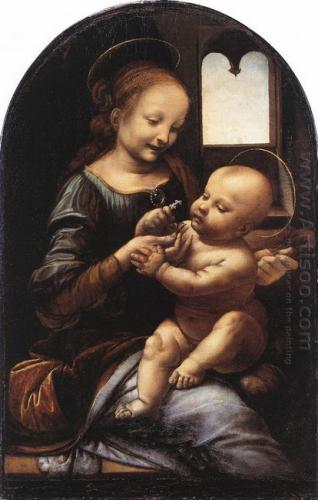Introduction to Madonna with a Flower

Introduction to
Madonna with a Flower
Madonna with a Flower was made by Leonardo da Vinci who was one of the most renowned representatives during the Renaissance period. Madonna with a Flower was painted in 1478 which showed the young Madonna and her son Jesus. Though this picture also used religious theme, it entirely eliminated the religious paintings atmosphere and was full of a strong human touch. The mother no longer displayed a cold face which was depicted in the traditional religious paintings.
Madonna dressed
in dark blue clothes, red skirt, and golden cloak with a brooch pinning to her
chest. Madonna held the child in her arms, with one hand holding him and
another taking a carnation. The child was in an attempt to reach out the
carnation. According to legends, the pink carnation was the sad tears of
Madonna when she saw the crucifixion of Jesus. The places that her tears fell
down grew the carnation, thus the pink carnation become the symbol of immortal
motherly love. The red carnation was the symbol of the martyrdom Christian
blood, seeming to indicate the child’s future experience.
A vase of
flowers was put in the prospect and the elbow of Madonna almost hit the vase.
Savary assured the painting was made when da Vinci learned painting from Vee Lo
Keogh, because the Madonna had the same characteristics of Vee Lo Keogh—pale,
Nordic type face, curly blonde hair, and eyes looking down. What could best
reflect da Vinci’s characteristics was the landscape across
the loggias behind Madonna, which were the rugged and zigzag mountains.
Post Your Ad Here
Comments